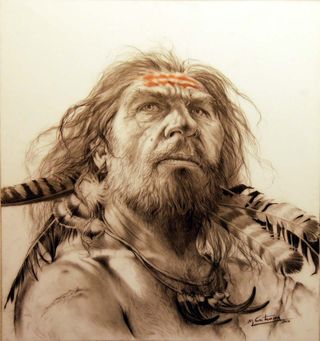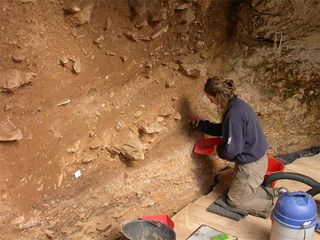Neanderthals Wore Colorful Feathers, Study Suggests

Neanderthals plucked the feathers from falcons and vultures, perhaps for symbolic value, scientists find.
This new discovery adds to evidence that our closest known extinct relatives were capable of creating art.
Scientists investigated the Grotta di Fumane — "the Grotto of Smoke" — in northern Italy, a site loaded with Neanderthal bones. After digging down to layers that existed at the surface 44,000 years ago, the researchers discovered 660 bones belonging to 22 species of birds, with evidence of cut, peeling and scrape marks from stone tools on the wing bones of birds that had no clear practical or culinary value.

"The first traces on the bones of large raptors were found in September 2009," said researcher Marco Peresani, a paleoanthopologist at the University of Ferrara in Italy. "After that, we decided to re-examine the whole bone assemblage recovered from that layer."
These birds included red-footed falcons (Falco vespertinus); bearded lammergeiers (Gypaetus barbatus), a type of vulture; Alpine choughs (Pyrrhocorax graculus), a relative of crows; and common wood pigeons (Columba palumbus). The birds' plumages come in a variety of colors — the gray of the red-footed falcon, the orange-shaded slate gray of the bearded lammergeier, the black of the Alpine chough, and the blue-gray of the common wood pigeon.
"We know that the use of bird feathers was very widespread and that humans have always attributed a broad and complex value to this practice, ranging from social significance and games to the production of ornamental and ceremonial objects," Peresani told LiveScience. "Reconstructing this usually hidden and poorly known aspect among extinct humans is one of the aims of our research." [Artist illustration of Neanderthal wearing feathers]
The scientists detailed their findings online Feb. 21 in the journal Proceedings of the National Academy of Sciences.
Sign up for the Live Science daily newsletter now
Get the world’s most fascinating discoveries delivered straight to your inbox.

Most Popular






